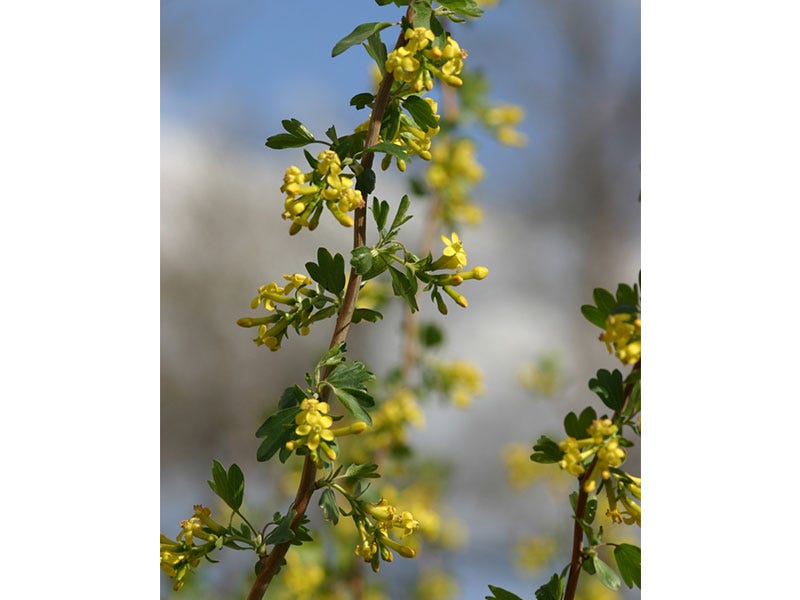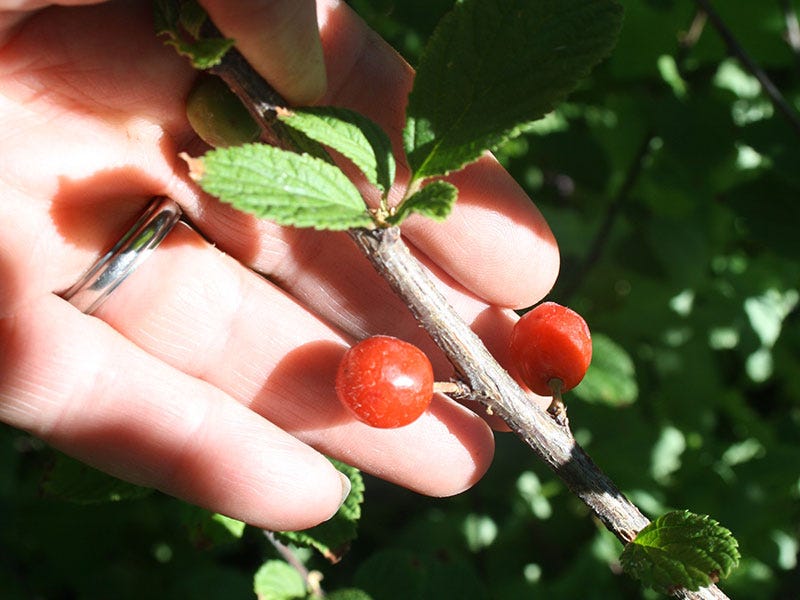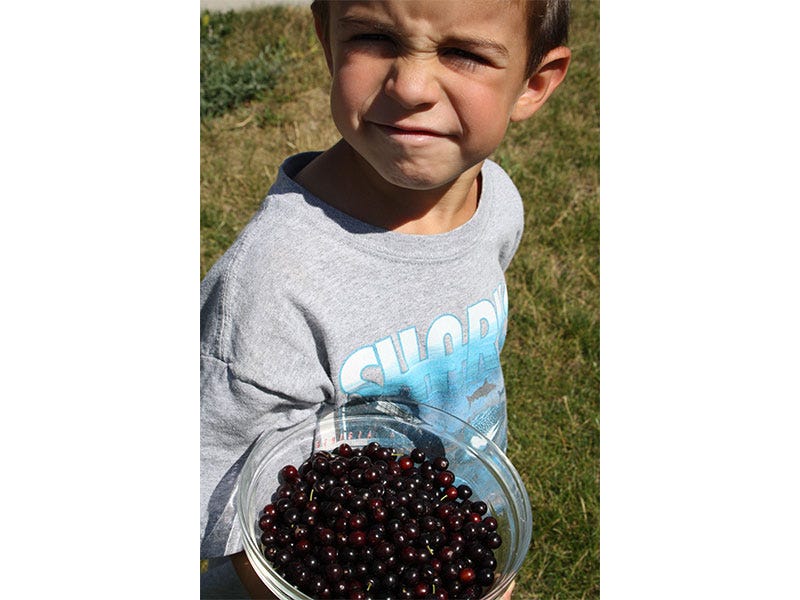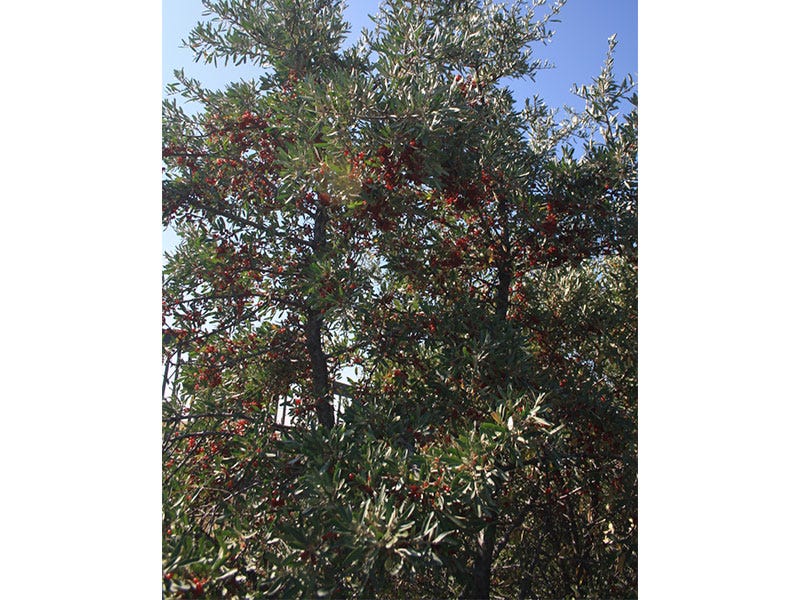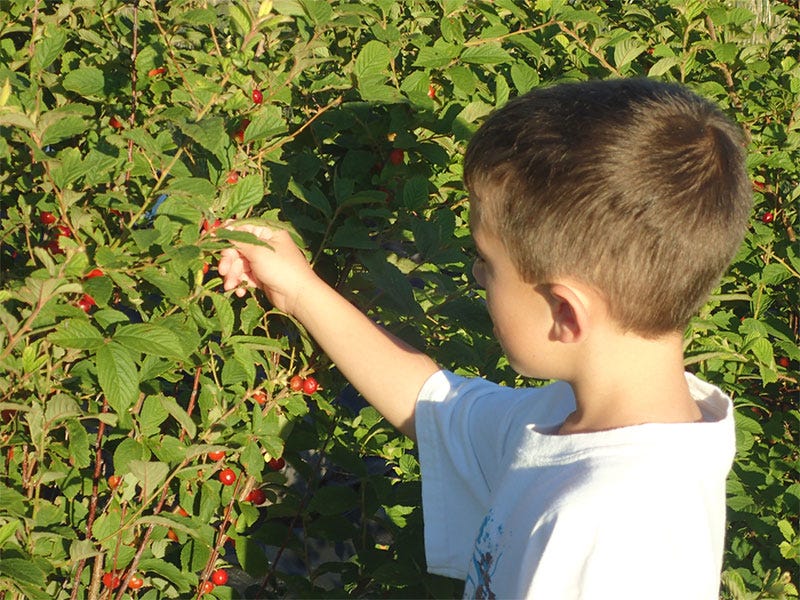Best Wild Fruits for The Backyard
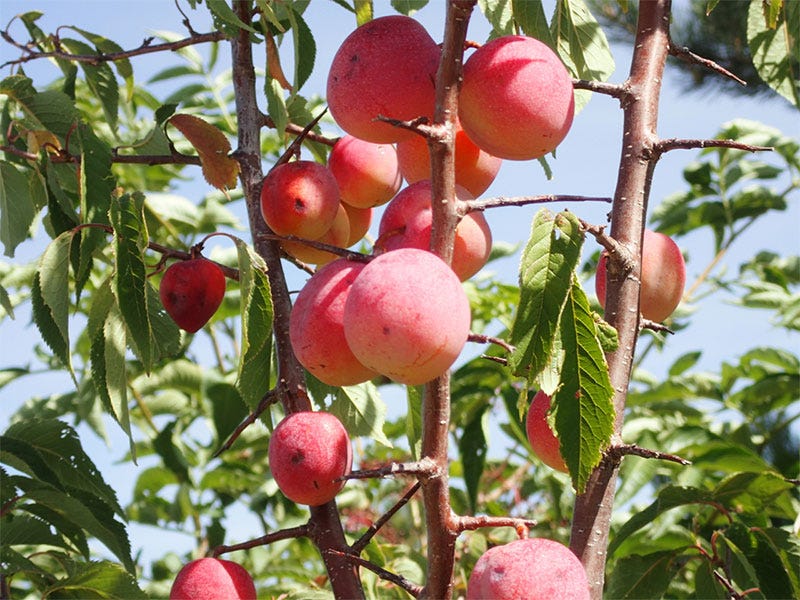
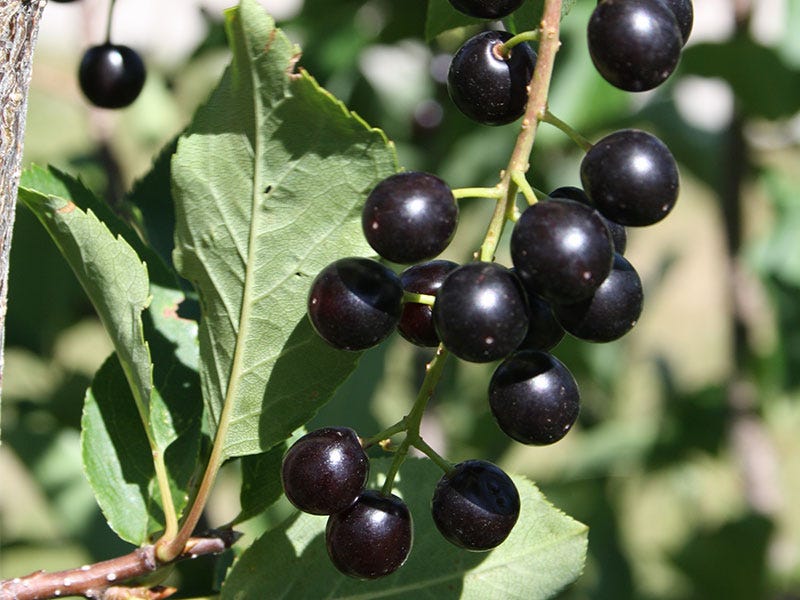
While it’s a whole lot of fun picking huckleberries during summer hiking trips with my family, I like to pick wild fruits close to home, too, especially when harvesting for the freezer. To facilitate just that, I make my backyard work double duty by incorporating several hardy, fruit-bearing species into my landscape. The following is a list of species and their attributes that may work well in your backyard.
1. Golden and Clove Currants for an Amazing Fragrance and Tasty Fruit
When the weather warms in the spring, the air fills with the heavenly fragrance of golden currants. During my first spring in Great Falls, I remember walking the Rivers Edge Trail along the Missouri River trying to figure out what smelled so good. I walked around like an insane person attempting to identify the source. When I found it, I was in love.
This native species usually blooms in May and produces a small but delicious fruit throughout July and August. These are terrific to plant in less formal areas as they can grow 10 feet tall and have a rather gangly appearance. Despite that, make sure they are at least within range of your olfactory because you don’t want to miss the delightful smell of their flowers.
If you’re looking for a more domesticated version, turn to their tamer cousin, the clove currant. They’re equally hardy (Zones 3-8) and have fragrant flowers. Appealingly, they don’t send out the suckers like the golden currants do. Plus, their fruit is larger and tastier.
Both varieties grow well in partial to full sun, and while they don’t need highly amended soil, they all benefit from a dressing of compost in the spring.
2. Plan on American Plums
Unlike conventional plum trees that produce marginally, if at all, in some areas of the West, the native American plum is a champion producer practically every year. It was certainly a welcomed sight to the members of the Lewis and Clark expedition, and they took advantage of this ready resource. The hardy shrub blooms in May, and you could expect to the harvest the fruit at the end of August into September, depending on the season.
The fruit carries an orangish hue, slightly smaller than a golf ball with a tart flavor that is a standout in jellies. It is super easy to pick bucketfuls of them, as long as you can beat the deer to the prize. Once gathered, they freeze nicely until you are ready to use them.
Plant these plum trees in full sun and give them at least four feet between plants. Keep in mind that they grow to roughly eight to 10 feet tall, making them a good addition to the hedgerow, particularly intermixed with other native fruit-bearing shrubs.
Starting to harvest your fruit? Let us help you with all your fruit harvesting needs.
3. Beautiful and Productive Nanking Cherries
I know spring is actually here when the Nanking cherries bloom into their cherry-white blossoms, which usually occurs in late April. These are hardy and perform well in zones 2-10. That makes them a good addition to practically any landscape. Just keep in mind they will grow eight feet tall—don’t plant them where they’ll cast shade on other areas of the garden.
When they’re ready in July and August, it’s a great chance to send the kids out with bowls and colanders to pick the tiny cherries. While they’re not very big, actually smaller than the standard pie cherry, they have a lot of flavor and make amazing jelly. I usually toss them into freezer bags and freeze them until I’m ready to make Christmas gifts.
4. Chokecherries at Your Fingertips
Yes, there are wild areas absolutely loaded with chokecherries, but I would rather pick them at home instead of lugging a big bucket through the brush and back to the vehicle. The nice thing about chokecherries is they are inexpensive to buy and they grow like gangbusters. In reality, we had a chokecherry tree in our yard when we first bought our place, and my husband kept mowing it around, hoping to be rid of it. That only seemed to encourage the growth, and now it’s over 12 feet tall.
Chokecherries do need some space to mitigate for their height since they will shade other parts of the garden. That means they’re best suited along the edges or in out-of-the-way spaces of the yard. They are easier to work around when you leave at least eight feet between the shrubs. That allows room to pick the entire perimeter. And since they thrive in lower areas or along streams and rivers, you can water them deeply every week or so, depending on your area and how much rain you receive. While they are undoubtedly tough enough to survive a drought, they produce better with a little extra water.
Chokecherries make excellent jellies, syrups for pancakes, juice, and some people even enjoy making wine with it. The trick with chokecherries is removing the pit that encompasses most of the fruit. While some people pick and strain, I prefer putting them in the steam juicer to make quick work of the process.
Beginning to can your backyard harvest? North 40 has a wide range of canning supplies here.
5. Beautiful Buffaloberries
Drought tolerant and just plain tough, buffaloberries are easy to grow and are recently touted as the next superfood, due to high levels of lycopene, a powerful antioxidant reported to lower the risk of cancer.
Buffaloberries can grow 20 feet tall, and they do have thorns, so give them plenty of space, although if you are so inclined, they can be pruned into absolutely beautiful shapes in your landscape since their silvery leaves are very attractive. Another benefit of these hardy shrubs is they fix the nitrogen in the soil, and thrive even in poor areas.
When planting, you’ll want to pick a spot where the natural suckering tendency of the shrub won’t matter, which means they are a good selection in a windbreak. Give them their own area and let them do their thing.
The fruit is small and tastes better if you pick it after a frost, but can be eaten fresh, as well as juiced for jellies and juices. The dried berries taste like raisins and can be added to oatmeal or other dishes to add an extra zip of flavor.
6. Going Wild
Adding native, or semi-native, fruiting shrubs to your landscape makes your efforts even more beneficial. These selections are an attractive aspect of your yard, along with producing a bounty of delicious fruit for your family and the resident wildlife.

